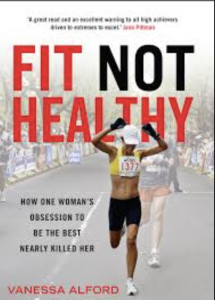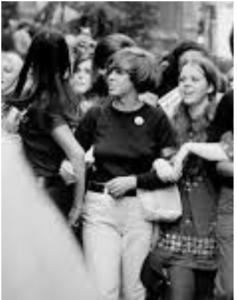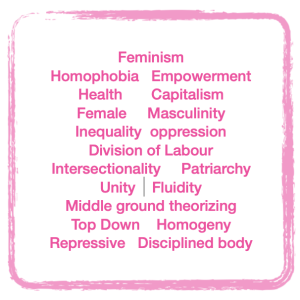1
Section One: The Fundamentals
A) What do we know about sport? What are common assumptions we make about sport and society?
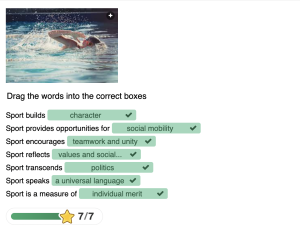
|
Sports certainly speak a universal language. They involve symbols and gestures that are widely understood regardless of your background or experience. I think in this way I take an alternative stance in that yes there are certainly mitigating factors in terms of access and attainment; however, the ability to utilize sports to bring people together can not be denied. I think in this way it is more about the ability to take people from all different cultures, experience, and socioeconomic background and when placed on a team they unite in terms of their common goal. I think my idea here is more that sports can be on a spectrum. There is certainly a difference in the grandiosity of sport in a wealthy American stadium versus a field in a third world country, yet at the end of the day are they both not playing soccer? The reliance on a team to complete a common goal without ever having to say actual words. |
Exercise 3: Notebook prompt
What are some other metanarratives about sport that you are familiar with? Find an image or video clip or draw something yourself that captures this idea…
So what? Why does any of this matter? Does it matter? As something we grow up with – live with – play through – we don’t often interrogate the meanings of sport, and perhaps we don’t want to.
But being aware of these assumptions and metanarratives is especially important, I would argue, because of the centrality of sport to our everyday lives, the role that sport plays in shaping our childhood and worldviews and….. [finish that thought]
|
There are many metanarratives in terms of sports one that comes to mind is a assumption that if you play sports you possess a level of fitness as well. There is a natural assumption that athletes are fit or healthy. While this can be true in some cases, many even profession athletes are quite the opposite. But being aware of these assumptions and metanarratives is especially important, I would argue, because of the centrality of sport to our everyday lives, the role that sport plays in shaping our childhood and worldviews and.. its very ability to be able to adjust our sense of self so profoundly. These narratives when better understood can then help to place the power back on the individual. The idea that any of these things are only plausible within an ideal society. |
B) What is social justice?
Exercise 4: Padlet Prompt
Think back to the last section and try to look at some of the ideas we discussed differently. How might sport and social justice actually co-exist?
Record any images, video clips, or gifs you added to the padlet and identify a point of intersection between sport and social justice (can be an issue or a barrier or a debate or something you would like to explore in more depth in this course) . Screenshot or paste in your response below.
|
Sports are an amazing way to empower students. The schools system and community athletics play a crucial role in forging positive identity development as well as ability to encourage social opportunities. In these situations sports can be utilized to teach children valuable skills such as emotional or self regulation. Sports are required to have a specific set of rules and regulations that are learned, they often also come with team building exercises that allow you to get to know your team mates. In these ways children not only have to be able to adapt and learn the new skill, but they then help to teach their teammates as well. The commentary provided during these situations also provides children with a way to reflect and critically think about their next moves. An example of this would be within my children’s elementary school. My daughter was having trouble controlling her feelings and became overwhelmed very easily she often used phrases like “ no one likes me” and “I am just not good at anything”. She was placed into a group they dubbed Active club where students in similar situation to hers would spend time learning the rules to a game for example basketball. They would then later come back to teach another group of students what they had learned. The second meeting created this unique opportunity to have to work together in a social situation where the students are the primary force. This experience greatly strengthens their emotional development and aid in forging relationships.
|
C) Social Justice Reading
D) KINESIOLOGY AND SOCIAL JUSTICE
Exercise 5:
Exercise 6:
What are the implications of bodies-at-risk discourse and the refusal to understand the health gap from a social justice perspective, according to the authors of this article?
|
Within the article A social justice agenda:Moving beyond deficit thinking the authors explain the implications or backward thinking of the bodies-at risk discourse. The article is based on an American standpoint in terms of health forums that are created in order to target a population to which they have deemed to be most at risk(Harrison et al., 2021). The issue they are addressing is that the population that they believe to be least healthy includes people of various ethnic backgrounds, Indigenous peoples, women, people with disabilities, and people experiencing poverty excluding the white male middle or upper class majority (Harrison et al., 2021). The continued inability to see health disparities from a social justice perspective only furthers this divide and continues to promote what they call the “master narrative” or the superiority of the majority class(Harrison et al., 2021). The importance of changing this point of view to instead incorporate the viewpoint of these minority groups is crucial in developing a socially just platform (Harrison et al., 2021). Without taking these views into consideration the health gap can not fully be addressed, and lacks the full ability to be able to empower people to create any real meaningful change(Harrison et al., 2021). Harrison, L., Azzarito, L., & Hodge, S. (2021). Social Justice in kinesiology, health, and disability. Quest, 73(3), 225–244. https://doi.org/10.1080/00336297.2021.1944231 |
Section Two: Sport Feminism
Exercise 7: Notebook Prompt
What is feminism? What does it mean to you? Choose one of the images below and explain how it captures your understanding of feminism (or find one that does speak to you and paste this into your pressbook with an explanation of why it matters to you.
|
Feminism to me is more in keeping with a liberal view point. I think that feminism is women working together to reach a common goal. That fight to ensure that women can have the ability to make choices for themselves regardless of what that may look like. I think that it is the equality of the sexes in terms of economic gain, political rights, and social hierarchy. In this way it is important to show the vast amount of abilities that women can yield, and work together to change the mindset of people who view women as an inferior species. |
Exercise 8: Notes Prompt:
What are the different kinds of feminism the authors outline and how do they connect to sport?
Liberal Feminism: The promotion and equal access to sports for girls/females. This includes encouraging all sports and not only those deemed to be more female friendly. There is also a push to have more women in power and deciding roles within the athletics hierarchy.
Radical Feminism: View sports as a way that men continue to yield power over women. They also view a high prevalence of male domination and the continued sexualization of women in sport, for example within uniform choices. They believe that the public also continues to view women in sport through phenotypic lenses rather than their ability. Radical feminists have also brought the stigmatization of lesbianism and homophobia within sports into light.
Marxist/Social feminism: Focuses on the division of labour within sports between males and females. In this way they review how women are seen more as the provider within sport. The women who are responsible for washing and packing the sporting equipment, procure and package the snacks, and provide transportation to and from the sporting event. They also view women as lacking within employment roles, or have jobs in terms of retail or food service rather than positions of power. The social views of masculinity and femininity within sport and how to correct the male hegemony.
Black feminism: The intersection between feminism and race. Provides understanding on the compounding of both race and gender and the importance of ensuring that you take into consideration all viewpoints. The need for the sports to take into consideration these factors together and not seen as separates.
Poststructuralism: Changing how we think about gender and sport and instead viewing interns of the body. The utilization of terms “the docile body” and “the disciplined body” in how you push yourself regardless of gender. The ability to see women in traditionally male dominated sports in terms of pushing our bodies and not gender or to surpass the views of gender within sport altogether.
Queer theory: Developed upon poststructuralist theory where gender has no basis within sport and can work to blur those lines. They have also reviewed that sexuality can be expressed in various ways.
Scraton, S., & Flintoff, A. (2013). Gender, feminist theory, and Sport. A Companion to Sport, 96–111. https://doi.org/10.1002/9781118325261.ch5
Exercise 9: Crossword Activity
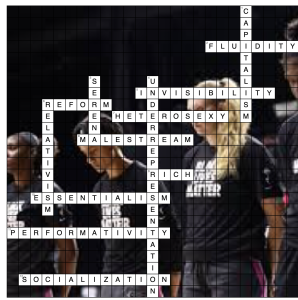
Exercise 10: Padlet Prompt
|
|
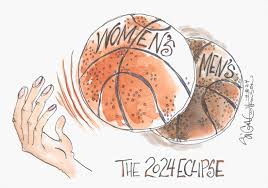
|
|

